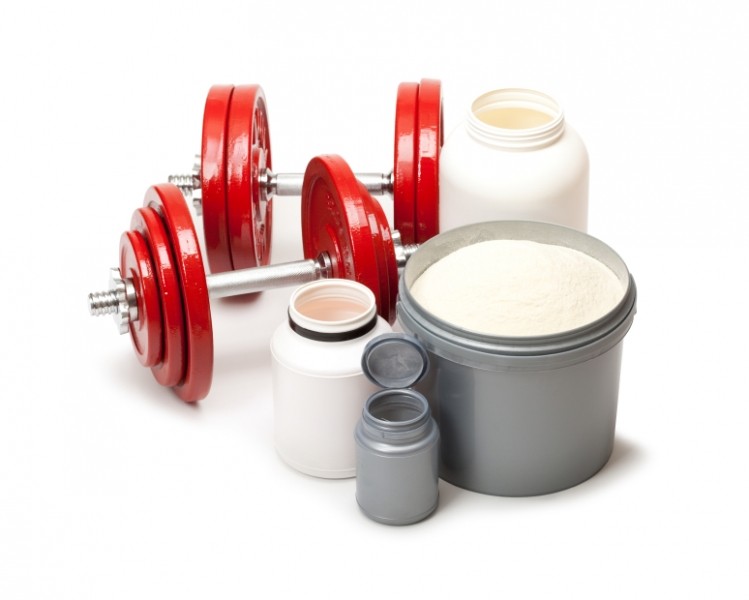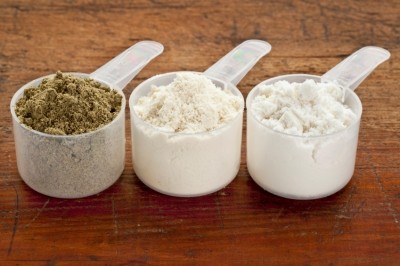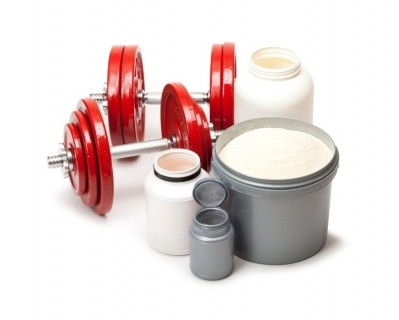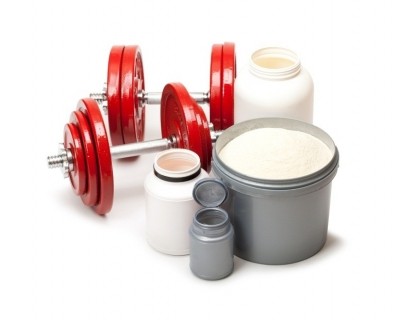Leucine: Where whey protein gets its magic

This has to do not only with the fact that whey protein is a complete source of protein containing all the essential amino acids naturally found in dairy—but in particular, it is one of the best source of the branched-chain amino acid leucine, which is associated with the stimulation of muscle protein synthesis.
“When you look at protein sources, whey compared to soy compared to even foods like steak or chicken has a lot more leucine,” Dr. Mohr told NIU. “One 20-gram scoop of whey protein isolate contains 3 grams of leucine. Comparatively, soy has only 2.4 grams. Some data suggests that 2.5 grams and above are the turning point for benefits when it comes to protein synthesis.”
This area in particular shows promise in muscle building and recovery. Dr. Mohr cited a 2009 study, titled “Ingestion of whey hydrolysate, casein, or soy protein isolate,” published in the Journal of Applied Physiology that examined protein sources and muscle protein synthesis over a period of time in 18 young men who regularly engaged in whole-body resistance exercise—specifically equal amounts of whey to casein (also dairy based) and soy. The researchers found that consumption of whey protein hydrolysate stimulated muscle protein synthesis to a greater degree than casein and soy after resistance exercise. “They found that whey protein enhanced protein synthesis above and beyond others,” Dr. Mohr noted.
To blend or not to blend?
In light of new research claiming that post-workout consumption of protein blends (such as whey, casein and soy) may outperform single sources for prolonging amino acid delivery and building muscle, Dr. Mohr notes that this area of research remains “largely unexplored,” adding that the whey content enhanced the overall leucine content of the blend, which is where the bulk of the argued benefits lie.
“The effectiveness of blends is an emerging area of research,” he said. “While muscle protein synthesis, via activation of the mTOR pathway, was the same in whey and the protein blend groups it should not be overlooked that the whey in the protein blend enhanced the overall leucine content of the blend. Additionally the volumes of supplement consumed were adjusted to match leucine content between the two groups. Thus the significance of whey in the blend and to the results continues to support the efficacy of whey proteins in activating muscle protein synthesis.”
Timing is key
How often protein should be consumed is another important piece to puzzle given its hunger-curbing abilities, he added. “It's important to emphasize timing and how whey protein helps satiate you throughout the day. How frequently we should be eating it is also key,” he said. “Typically, Americans get 10-15% of their daily protein intake in the morning, 20% at lunchtime and remainder at dinner. If we can shift that focus so more evenly spread out throughout the day, we’d get more benefit, specifically with protein synthesis.”
That’s because our bodies don’t store protein, he added. Aside from the protein we use for regeneration, recovery, repair and synthesis, the rest is excreted when we don’t need it.
Rebuilding muscle in an aging population
Whey’s unique benefits could also have important implications when looking at rebuilding muscle mass in older populations as the Baby Boomer generation continues to age.
“The Baby Boomers make up a big portion of the population. It comes back to looking at the benefits of protein synthesis in that population,” said Dr. Mohr. “If you look at how quickly we lose muscle mass during bed rest, for example, a lot of people within that aging population are not doing much more than that physically. So easily digested protein sources like whey become even more important.
“Whey protein is an easy way for older people to add protein to their diets without substantial calories or other food they might not have time for in terms of practicality. But they also get that powerful dose of leucine for rebuilding muscle.”
Because it's essentially flavorless and disperses easily within products, it can be easily incorporated into a variety of products.
"It is such an easy type of protein to mix without flavor and grittiness you often get in protein mixes, so you can use in so many different ways," Dr. Mohr said. "A lot of great data continues to emerge on the unique benefits of whey protein. But a lot of it has to do with leucine and protein synthesis. It all seems to center around that."
















